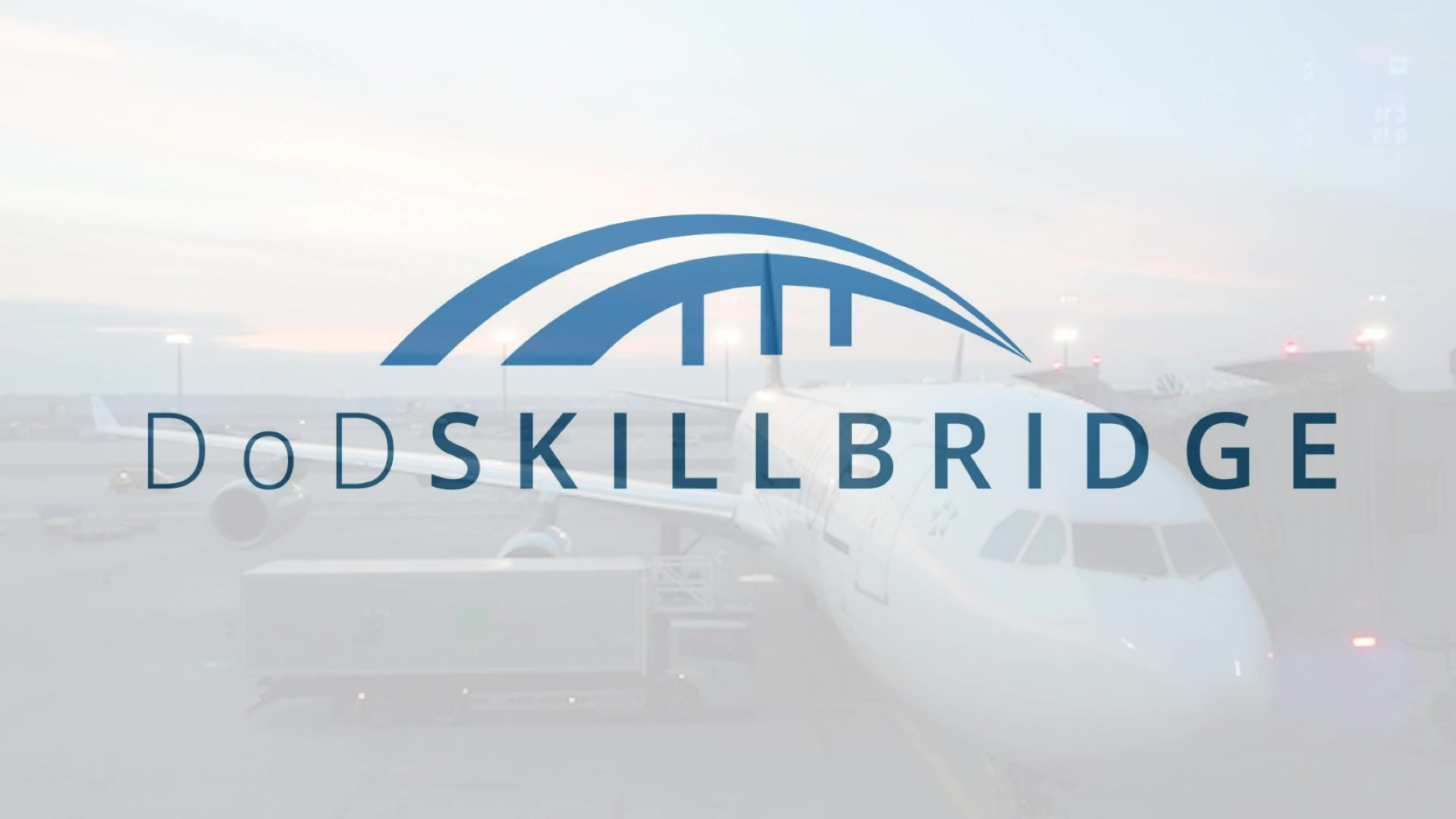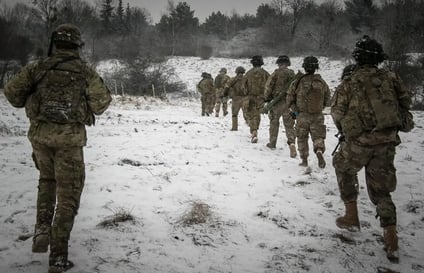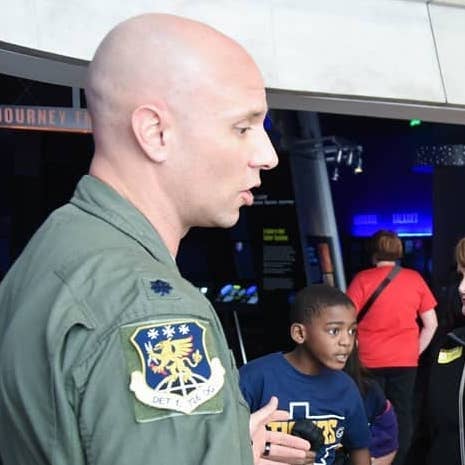Navy SkillBridge
Army SkillBridge

SkillBridge Army Specific Information
You must apply to SkillBridge with Flex Air first so we can send you an offer letter! Otherwise your chain of command will reject your application.
- This article was last updated 12/30/2024
- Keep in mind that there are THREE Army SkillBridge pathways:
- US Army Career Skills Program (aka "Army CSP") - these are programs vetted by the U.S. Army.
- DoD SkillBridge (aka "SkillBridge") - these programs are not vetted by the U.S. Army but are approved by the DoD.
- Individual Internship Programs (aka "Internships") - these programs are custom opportunities that soldiers can negotiate for with individual companies. They can be difficult to set up and request because they are not standardized.
- Flex Air SkillBridge is a DoD SkillBridge Program. This means it is not vetted by the U.S. Army Career Skills Program and may require SJA legal review.
- Flex Air is working on obtaining Army CSP Approval to streamline the paperwork process for soldiers, but this is in work. We will update this page when Flex Air is approved for Army CSP.
- In the meantime this means you are 100% authorized to participate in Flex Air SkillBridge under the DoD SkillBridge program.
How to Apply:
-
Visit your local TAP office for installation specific processes. Complete the documents and steps below.
- Step 1: Apply to Flex Air SkillBridge - we will send you all the paperwork you need to present to your chain of command in your SkillBridge packet.
- Step 2: Complete the Individual Internship/ DoD SkillBridge packet.
- CSP Soldier Checklist
- Form 45
- Absence Request Form (IPPSA-CSP Administrative Absence) - If applicable
- Agreement for Army CSP Individual Internship _ Approved DoD SkillBridge Program
- Step 3: Send the completed packet with supporting documentation to the local TAP office or Regional Coordinator.
The Agreement for Army CSP Individual Internship _ Approved DoD SkillBridge Program has four parts. Don't try to fill this out on your own! Apply to Flex Air SkillBridge and we will send you a pre-filled form.
Part I - Soldier enters their information as well as an overview of the company and information about the proposed internship and any training specifics. The company may be able to assist with this information. Additional information can be included as an attachment.Part II - The provider/agency POC will sign. In the drop-box at the top select either “Individual Internship” or “Soldier Requesting to Attend Approved DoD SkillBridge Program”. Once selected, verbiage will populate in the field below stating that the provider agrees to the Army CSP policy.Part III - Send the packet and supporting documentation to the local unit JAG for a legal review.*Check with your local TAP office for installation routing procedures.Part IV - Send completed packet and supporting documentation to your local Tap Office or CSP Regional Coordinator. The Regional Coordinator will conduct the final review and provide a final signature. At that point, all requirements to participate in a CSP will be completed.
Need more Army SkillBridge information? Join our Q&A sessions online.
SkillBridge Army Frequently Asked Questions:
What is the Army Career Skills Program (CSP)?
The Army Career Skills Program is a program designed to provide transitioning soldiers with job skills training and industry-recognized credentials to enhance their employment prospects after leaving the military.
Who is eligible for the CSP?
The CSP was created for “high risk” Soldiers (by regulation: age 18-24, first term enlistment, involuntarily separating due to force shape, rapid separation from active duty, or medical separation). However, all transitioning service members receiving an Honorable or General Under Honorable Conditions discharge are welcome to attend a CSP.
Are Army National Guard and Army Reservists eligible?
Eligible service members must complete at least 180 continuous days on active-duty status and are expected to be discharged or released from active duty within 180-days.
Can MEB Soldiers participate in a CSP?
Soldiers enrolled into IDES or assigned to a Soldier Recovery Unit (SRU) may begin a CSP immediately following their Medical Retention Determination Point (MRDP). Soldiers assigned to a SRU no longer have to wait 85 days to begin a CSP once their MRDP is established due to the possibility of a separation date being established that would not allow the Soldier the opportunity to participate in a CSP.
Is participation in the CSP mandatory for transitioning soldiers?
No, participation in the CSP is voluntary. However, it is highly encouraged for soldiers who want to enhance their career prospects and gain valuable skills before transitioning to civilian life.
When can I start a CSP?
Soldiers may begin a CSP no earlier than 180-days from their separation/retirement date (not terminal leave date). The 180 days from discharge requirement is statute from 10 U.S. Code § 1143 (Employment assistance), section1143 (e)(2)(B): “A member of the armed forces is an eligible member for the purposes of a program under this subsection if the member …is expected to be discharged or released from active duty in the armed forces within 180 days of the date of commencement of participation in such a program.” There is no Exception to Policy as this is a statute and not policy.
How long is a CSP?
DoD SkillBridge Programs and/or Individual Internships are recommended to be 120-days or less. Approval authority is granted to HQDA G-1 for programs 121 days or more.
Do I need to request Administrative Absence if I'm staying within 50 miles?
No. Soldiers must attend in a present for duty status for an on-installation, or off-installation CSP that is geographically co-located with their duty station and not to exceed a 50-mile distance.
Do I have to return to my duty station after I complete the CSP?
Yes. Planning must include sufficient time after completion of CSP to return to your permanent duty station to complete physical and administrative out-processing requirements in accordance with AR 600–8–101, to include unit-level and installation level out-processing and final out before a separation or retirement date.
Can you do a CSP OCONUS?
When it comes to CSP participation in other countries we are very limited in what can be done because of SOFA restrictions and the Tri-Service Contract. Transitioning Soldiers stationed at OCONUS garrisons are encouraged to utilize Administrative Absence to attend CSPs at CONUS garrisons where they are likely to transition from military service and/or later reside as Veterans.
Can you only participate in CSP on ETS or Personal Leave?
CSP is intended to be used as non-chargeable leave prior to ETS/terminal leave. CSP is not intended to be used in conjunction with any other type of leave.
Can you do a CSP past your ETS date?
Participants can stay in a CSP past their ETS date, we do like to ensure they will be financially stable enough to do so since they’ll no longer be receiving their Army paycheck.
Can you use TA for CSP?
The Army doesn’t pay for CSP classes. CSP programs are either free (typically sponsored by the company hosting the program) or paid for using the G.I. Bill and/or grants. No – G.I. Bill and grants may be used to cover any cost of a CSP.
What is the difference between the CSP and DoD SkillBridge?
The Army Career Skills Program (CSP) and the Department of Defense (DoD) SkillBridge program are both initiatives that aim to assist transitioning service members in gaining civilian job skills and improving their employment prospects. However, there are some key differences between the two programs: CSP: The Army Career Skills Program is administered by the U.S. Army.
- CSP providers have agreements in place with Army garrisons and must meet strict program outcomes of 85% graduation rate, 100% interview rate and 90% job offers to ensure programs are effective and provide quality careers.
- DoD SkillBridge: The DoD SkillBridge program is a broader initiative that encompasses all branches of the military. It allows active-duty service members from the Army, Navy, Air Force, Marines, and Coast Guard to participate in civilian job training and internships during their last 180 days of service.
Can't find a good time to join the webinar? Watch a recent recorded briefing here.
Whether you plan to participate in one of Flex Air’s programs or not, I highly recommend every transitioning military veteran allocate an hour of their time to speak with Paul about their life plans. I guarantee you will not be disappointed in what he has to say. He is a phenomenal advisor that gets “it” because he has been in our shoes.
Brandon McRay Lt Col, US Air Force Reserve

More resources for transitioning servicemembers
.jpg?width=225&height=150&name=shutterstock_1556191427%20(1).jpg)
Resources for all Veterans
Readings and exercises can help you discover your personal career goals and values while developing the soft skills you'll need for success.

Rotor Transition Program (RTP)
Military helicopter pilots can transition directly into airline careers. Flex Air's RTP training is a complement to SkillBridge for rotary wing pilots.

GI Bill for Flight Training
SkillBridge is your best first step. Learn how to unlock your VA benefits for advanced flight training.


